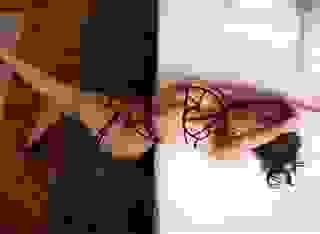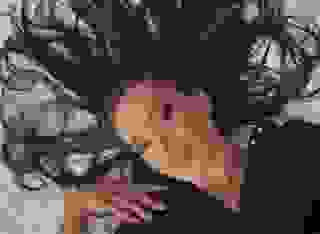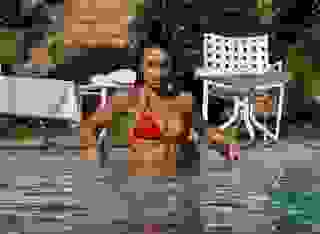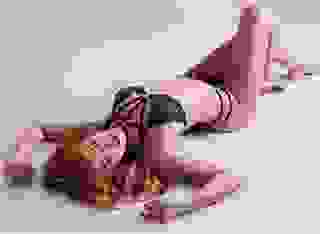Note: You can change font size, font face, and turn on dark mode by clicking the "A" icon tab in the Story Info Box.
You can temporarily switch back to a Classic Literotica® experience during our ongoing public Beta testing. Please consider leaving feedback on issues you experience or suggest improvements.
Click hereFinally the day came when they could begin working on their house. Simon, Paula and Sherry were deeply involved in planning the new building and selecting just the right location. Tom only participated when one of them insisted or asked him a point blank question. Of a necessity the building was going to be small and plain, at least at first. It would be primarily wood construction. When it was just going to be him and Paula Simon planned on a one room cabin about 14 X 20. With the addition of his siblings they decided they would make a four room cabin in an L shape with the inside of the L facing southeast looking over their stream and valley toward their crops. Simon and Paula would have a bedroom on one end of the main part of the cabin. The other two would have smaller rooms on the base of the L.
The first task, after they laid out the building, was to harvest the logs. In fact, some of the logs were already cut and drying. Simon knew enough about building log cabins that he knew you had to knock the bark off the logs and let them dry some or it would be extremely difficult to keep wind and cold from coming through the numerous cracks between logs. He did have an idea he wanted to try before using the round logs and chinking the cracks however. It would be more work but if it did work the cabin would be almost a permanent home for them and would last several years.
At least with Tom helping they could work much faster. Simon and Tom used the crosscut saw to drop trees. Paula helped trim limbs from the trees and Sherry used one of the draft horses to pull the logs back to the camp area for future use. What with keeping the garden weed free and doing other necessary chores it took almost two months to cut what Simon estimated were enough logs to build their home.
On the day Simon decided they had enough logs to build with they began working on the foundation. They first dug a trench for the footing and foundation. After the trench was dug they began work laying stones for the foundation. Paula had found some clay in the stream she thought would make good pottery. They went to the stream and began digging the clay out of the banks and stream bed then placed it in the sledge. Again Sherry drove a draft horse as it pulled the sledge to the house site. Tom and Simon placed the clay on the first row of limestone they laid in the footing for the house. They then laid another row of stones on that. This work continued until they had the foundation built up about eight inches above ground and level all around. After that they all used the sledge to haul clay and smaller rocks from the stream to build up the interior floor until it was level with the top of the foundation. They left about a foot of distance between the foundation and the interior floor.
It was now the hottest part of the summer and the clay between the stones dried rapidly. After a week Simon decided the clay was dry enough and they began placing wood on either side of the foundation using limbs from the trees cut to build the house with. After there was a row of wood on each side of the foundation they started it burning early one morning. For two days they kept the fires burning slowly as they dried the clay between the rocks. They hoped this would turn the clay into a semi hard pottery like substance and work as a sort of concrete. After Simon thought the clay was cured enough they filled in the outside with dirt taken from the trench and the inside with the same rock and clay mixture as used on the floor. Next they screed off the floor and made it as level as they could after spreading a three inch thick batch of clay mixed with some pulverized limestone over it. This resulted in the interior floor being about three inches higher than the top of the foundation. Once again they let the mixture dry for several days. It had taken several days in the evenings to pulverize the limestone using sledge hammers. Simon wasn't sure he had enough but he believed this would make a rudimentary type of concrete for a floor. He hoped anyway. The interior floor, being higher than the foundation, should prevent water from coming into the house from under the bottom logs during a rain. After they were better settled Simon hoped to install a thin rock slab floor in their house.
Now work on the house stopped for a while so Simon could work on another project, one he hoped would make the house air and water tight. Part of the load on Simon's wagon was the pieces to make a small saw mill. He had four circular blades, some dolly wheels and twenty five feet of double track for the dolly to run on. Now all he had to do was build the mill while the timber dried some more.
To Simon's surprise and pleasure when they began building the saw mill, really when they began building the house, Tom's attitude began improving. Now he was the first to work as they built a water wheel using the few metal parts Simon brought for that purpose. They next built a flume to bring the water from higher up the hill to the top of the small water wheel that would power, first the saw mill, then later, hopefully a grist mill.
It took them another month to build the saw mill. Finally they were ready to see if it would actually work. It seemed to work fine when they tested it without a load. Now came the true test. Simon already knew the saw was running at much too low a speed but he had used all the gears he brought to get it to a somewhat decent speed. He just did not have any different gears to increase RPM's to make it go faster. He would just have to move the logs through it slowly both because of the slow RPM's and because he didn't want to overload the system. The water wheel was not powerful enough to put a lot of pressure on the works.
The first few logs that went through would be cut flat on one side. After that the log would be rolled 180 degrees and have an inverted V cut on the top. This log would then be laid on the foundation, flat side down. The next log would have a V cut on the bottom and an inverted V cut on the top. They would be placed on the bottom log so the V's fit together. Each corner, of course, would be notched as log cabins normally were. They intended to reverse the logs every course so the smaller diameter end of one was over the larger diameter end of the log below it. In this manner Simon hoped to keep the cabin walls somewhat level. After each course was laid the women used a brace and bit to drill into the logs inside the house. The hole was drilled at an angle about every five feet. After the hole was bored a tree limb fashioned into a dowel was driven into the hole to hold the logs more securely in place. After the cabin was completed they would use the brace and bit to drill holes for pegs to hang items and attach shelves to.
The outer walls of the house would only be slightly over 6 feet tall. Hopefully this meant only 7 logs high as the logs averaged one foot in diameter after the bark was removed. The hardest part of the whole operation was the damn changes needed to the cutting blade to cut the different angles on the logs. Simon almost quit trying to build the cabin in this manner but Tom finally came up with the answer. Even with his fix it took several minutes a log to do the final cuts using hand tools.
Tom figured out how to set the saw blade on an adjustable wooden frame so when the dolly ran the log past it they only had to adjust the height of the blade to make the cut. It was a slow, dangerous process but finally they had all the logs cut and fitted together. They used limestone and mud to build a fireplace with a rudimentary oven into the kitchen part of the house. After the house was completed Simon used part of the PVC pipe he brought to run a waterline from a spring surfacing up the hill from the house. It was a free flowing, continuously running stream of water but at least they had running water in the house. They decided to do the plumbing in this manner rather than use one of the two small hand pumps brought with them.
Simon was still thankful he managed to convince the aliens that PVC pipe and Plexiglas were acceptable substitutes for glass and metal pipes in normal use before 1930. In fact, after he thought about it he and Paula managed to obtain several items for transport that they probably shouldn't have if the rules initially laid out for them were followed strictly. He never was sure if the aliens didn't realize some of the items were too modern or if they just decided to ignore them. Either way he was glad they got to bring some of them.
After the house was nearly completed they had to reconfigure the saw mill once again so they could cut several boards and beams to finish it. They cut beams for the roof rafters and stringers on which to nail cedar shingles. He also cut a few boards to frame out the windows and make shutters and doors. The windows, while small, were functional. Simon used part of their weight allowance and brought several sheets of Plexiglas. Each bedroom had one window and the living area had two. The windows were framed in using boards cut for that purpose and opened by swinging in. Shutters fit outside the windows and opened outward. They were locked from the inside so intruders could not break into the house easily should they try. Before the house was completed a nice porch was added to the front of the house inside the L. Some work got done on the house every day. There were many days very little was accomplished however, because of other more important tasks such as hunting and keeping their crops free of weeds. Of course, later in the season much time was spent in harvesting and storing or preserving the crops too.
Several times during the summer and fall the small family saw native beings watching them work. They always waved and tried to be friendly but were unable to make contact. Many times they saw tracks near the house and fields where the natives came to investigate the strange new neighbors. Somewhat to his surprise Simon never found anything important missing although he did suspect a little of their garden produce walked off.
Once while he was hunting Simon saw a hunting party from the village (he assumed). Since he still hunted with his rifle he shot two small bison from the herd both parties were stalking. The native hunting party was startled when Simon shot and moved away slightly. Simon chose the bison he wanted to keep and hooked a rope to the other. He used his horse and pulled it several hundred feet toward the hiding hunters and left it for them. Before he left he made motions for them to come get the meat. He rode several feet back toward the animal he was keeping before stopping once again. He turned to face the natives and again made 'come here' motions and pointed to the bison he left for them. As he was pulling his bison toward his home he finally saw the natives hesitantly approaching the bison he left for them.
After the house was completed the small family turned to furnishing it. The first furniture was made from lumber cut from the trees harvested earlier. Much of the furniture was made from a wood that resembled cedar. It was very simple and utilitarian but made living so much easier it felt luxurious. It was wonderful to sit and eat off a table and have a bed frame to put a homemade mattress in. The women thought it was even better to be able to work and cook using the cabinets they made from the wood. Of course, sanding them was a real bear. They used actual sand and rocks to smooth the wood but eventually they got the job done.
The days were now much shorter and cooler as Simon and Tom turned their attention to building a smokehouse. That only took a couple of days because it didn't have to be as solid as the house and was much, much smaller. After the smokehouse was completed the whole family hunted, dressed, and smoked meat for several days so they would have food for the cold days of the winter. They even made some sausage from a wild hog like animal and ground chicken mixed. Some of the meat they preserved was pre cooked and stored in large gallon jars covered in grease then sealed. Many of the hides from animals taken now were saved and tanned. Boy, making leather the old fashioned way was a lot of work also. While the meat was smoking or cooking everyone worked on tanning hides.
Finally things began to slow down even more and some of the small, less important, even easier jobs that were put off earlier in the year got done. Thankfully now, the work was not so heavy and they could actually take some time to relax also. Simon and Tom built four chairs for the family to sit in on their little covered porch. They used about 2" diameter limbs for the legs and back and ¾" diameter limbs for rungs to support the legs. Smaller boards cut thinly worked as the back and hickory bark was used to weave a seat in them. They were surprisingly comfortable. Using the hand tools it took them about 8 or 10 hours to build each chair. After the chairs were done, many early mornings and late evenings now they actually sat a few moments and relaxed. They derived a lot of pleasure watching the sun come up or set.
One morning everyone was sitting watching the sun come up while they enjoyed a rare cup of coffee. They only brought about 5 gallons of ground coffee and rationed it carefully. Simon looked around their little house and said, "You know, I'm really proud of our accomplishments this summer. I'm not looking forward to the cooler weather and trying to wear clothes either. I never thought I would get used to going naked but after it was more or less forced on me I find I really enjoy it. I hated having to wear clothes while we were doing the heavy work. I wonder what we'll be like in several years though. Will we have to worry about skin cancer?"
Paula said, "I don't think so. You remember the professor told us they did a lot of genetic work on us when we were in medical. I think he said all types of cancers and heart problems as well as most of the other genetic diseases were cleaned out of our genetic codes. You remember he told us we would now heal much faster if we were injured or became ill. He told us they boosted our immune system and that the native bugs wouldn't bother us as much as old Earth ones did, either. I really think we are pretty safe from most of the old frightening diseases."
"I hope so. I guess we'll see. I'm looking forward to the longer life. I'm still not sure I believe we could live to be 400 or even 600 or 800 years old like the biblical people did. Hell, I'm not even sure I want to live that long. I guess it all depends on how healthy we stay and if we can keep from becoming bored with our lives.
But enough of this, I want to talk about what we do next. We've pretty much ignored our neighbors and we've only done a little exploring since we've been here. Most of the exploring we've done was when we were hunting. I think it's time we went visiting and saw what the land is like around us. I would also like to brainstorm our future actions so we can act instead of react. This is a new, unspoiled world and we will have a lot of say in how it progresses. I am somewhat surprised our benefactors didn't try to convince all of the colonists to do the same thing and didn't try to direct what we did on this world."
Paula sat and looked thoughtful for a moment then said, "You know, in a way I think they did try to guide us. Remember when we were told how strict the selection criteria was to get into the program? They were pretty sneaky if that is what they did. Remember Professor Sheripati said they selected people who were not overly aggressive, not arrogant and who professed to believe in the basic human rights, who were ethical, honest, and so forth? They ran us through those classes on psychology, sociology, government, and political science before we were guided to the final selection class where Professor Sheripati gave us that research paper. I don't know if any of the other students were 'in the program,' but I did notice those who advocated bringing a large amount of fire arms and other non-defensive weapons were not invited to colonize. At least I didn't see anyone I recognized the last few days we were on the ship. You brought more weapons than either Don or I advocated. I was only going to bring a small pistol and I'm not sure Don even brought a weapon.
"I think they really subtly guided us. I bet if we were able to check on the other colonists we would find they are doing much as we are. They are building their homes and have either already made friends with the natives or are planning to do so. From what little I heard in the day or two just before we landed I don't think there is much desire to return to the polluted industrial society we came from.
"I think we need to guide progress forward but try from the start to protect the environment. Go for electric power and motors. Get as much electricity now as we can from hydro and wind power. Guide future generations to go for solar power and even geothermal. Oh, of course we will have to start on the path to a manufacturing economy as population increases but we can guide them to less dangerous ways to manufacture. We need to guide our charges into the sciences early, but also selectively. We should not even mention some of the destructive inventions. I hesitate to make explosives but they are so necessary when a society tackles large construction projects that I feel we have to."
She paused and looked upward, then continued, "The stars are out there and beckon us. We few colonists know it's possible to reach the stars and the benefits of doing so. I think that's the purpose we serve here. We are guardians of this new budding civilization and leaders into tomorrow. We are here to guide, teach, and inspire."
Simon looked at his wife in awe. Sherry and Tom sat with their mouths open. Finally, Simon said, "WOW! I don't know what to say here. It sounds as if you've spent a lot of time thinking about this already. I feel as if I'm way behind the power curve here. You have touched on some of the topics I have thought about but, wow. You almost have our whole lives planned out now even if we don't have a road map on how to get from point A, where we are now, to point B, where we want to go. All we need to do now is think more and flesh out the plan."
After Paula's little dissertation the original statement was almost forgotten. Finally, Simon came back to his original statement and repeated it. He said, "I'm almost afraid to go back to what I said earlier, but we have to. We need to decide what we do next. I mean in the immediate future here, not weeks, months, or years. I think we need to explore and meet our neighbors before we begin making long term plans that will affect them. We need to know who they are, how they interact with each other, and how we can interact with them to best advantage. I agree we have much to teach them, but there is a question here. The question is 'Do they want to learn from us' and if so, 'how do we go about teaching them'? We need a meet and greet after which we need to come home and make plans for the immediate future so we can begin making a difference. If they're unwilling to interact and learn is that a temporary thing we can change or is it a permanent problem?"
The family agreed with Simon. An excursion was planned for the next day. They decided they would all saddle up a horse and ride to the lower end of the valley to meet the neighbors. They would take enough food and supplies for a three or four day stay away from home. Before they returned home, in addition to meeting the neighbors most of the valley would be explored.
They had not seen any large predators so felt safe leaving their livestock for the length of time they were going to be gone. There were some small cats around and even some larger ones on the other side of the valley as well as some wolves, but they had not seen them near their buildings. The horses could probably fend for themselves for a short time. At least they were gambling that would be so. It was more dangerous leaving the fowl alone than the larger animals. They had feeders set up to carry the fowl through the period they would be gone and they were penned up but still outside where predators could get to them.








